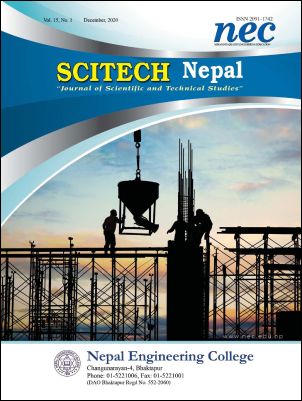Examining the Efficiency and Effectiveness of Alternative Material for the Interlocking Prefabricated Sandwich Panel
DOI:
https://doi.org/10.3126/scitech.v15i1.49100Keywords:
Fiber-reinforced concrete, compressive and flexural strength, prefab panel, sustainable environmentAbstract
The paper shows the effective utilization of non-degradable waste material like the hair of humans, Expanded Polystyrene Spheres (EPS), and rice husk fly ash to a final product Fiber-reinforced concrete panel. Concrete fracture, catastrophic failure, spalling of concrete and non-quake resistance, with the application of a load are major problems of the current scenario in the concrete world (Mindess, 2009). This paper tries to solve this type of problem by using the natural fibers and some additives which are under patient right. The researcher of this paper has developed a prefab panel which may be the substitute product of brick, ACC block, interlocking block, EPS panel, and local prefab panel. The utilization of industrial waste to usable products for construction is a major challenge that the researcher has taken. The paper shows that product can be made economical and able to reduce environmental challenges. Ingredients like human hair, EPS, chemical agent, cement, fly ash, water, and fiberboard are utilized in a certain time and fixed condition to complete the formation of the Fiber-reinforced concrete panel. The panel was found to have multi-function like a light in weight, fireproof, and flexibility which was its main USP (Unique Selling Point). The researcher thinks this product might change the perception of Nepalese customer, who thinks prefab as a costly and less strength product. Nepal political instability and dependent culture on foreign country shows an impossible possibility to use an artificial fiber and imported fly ash (ITC, 2017). This paper also presents the Nepalese market perception through the business model canvas, a business strategy that can be taken, hindrance, and the possibility to use human hair fiber, fly ash and recycled EPS to complete finished goods.




